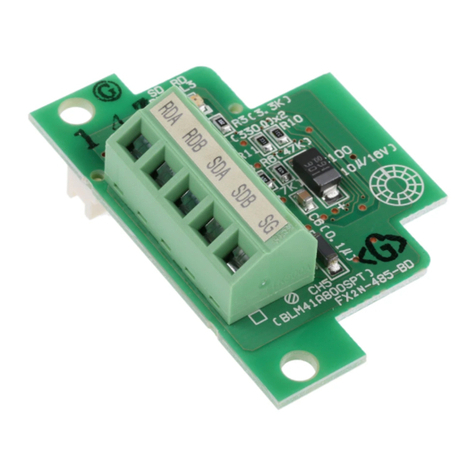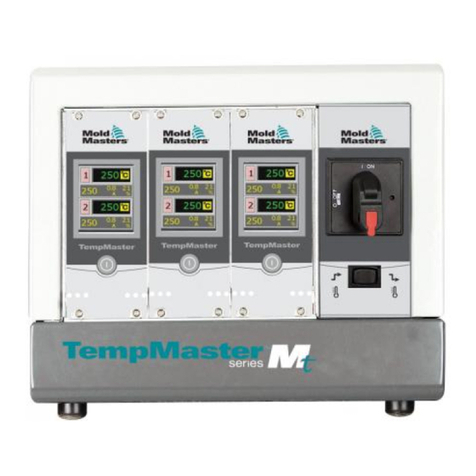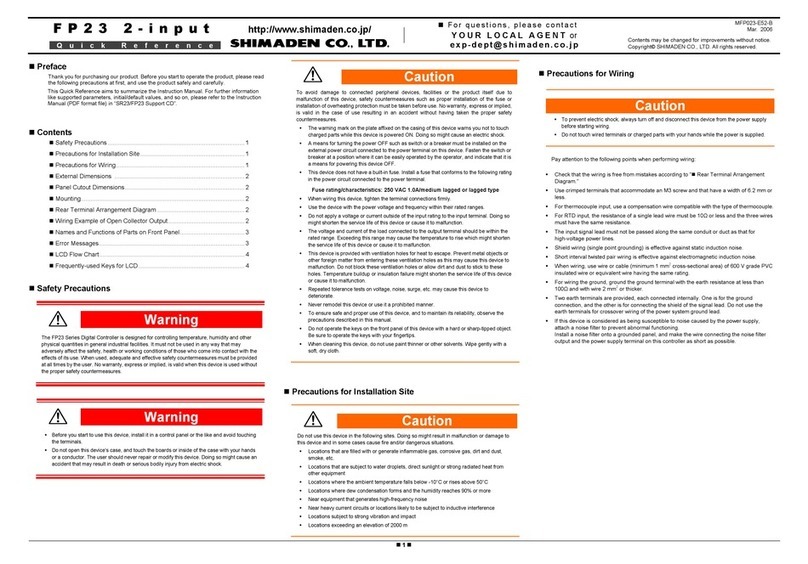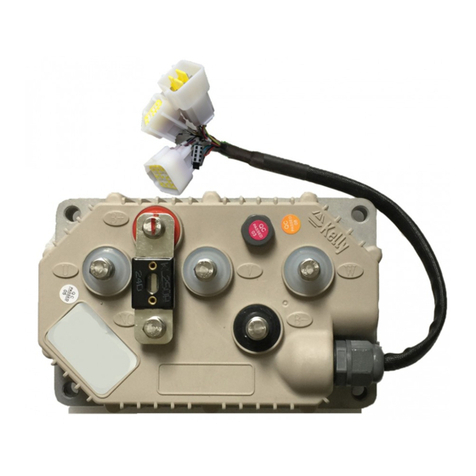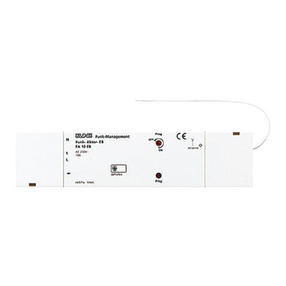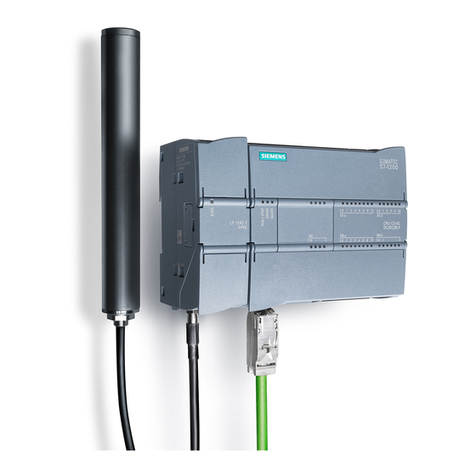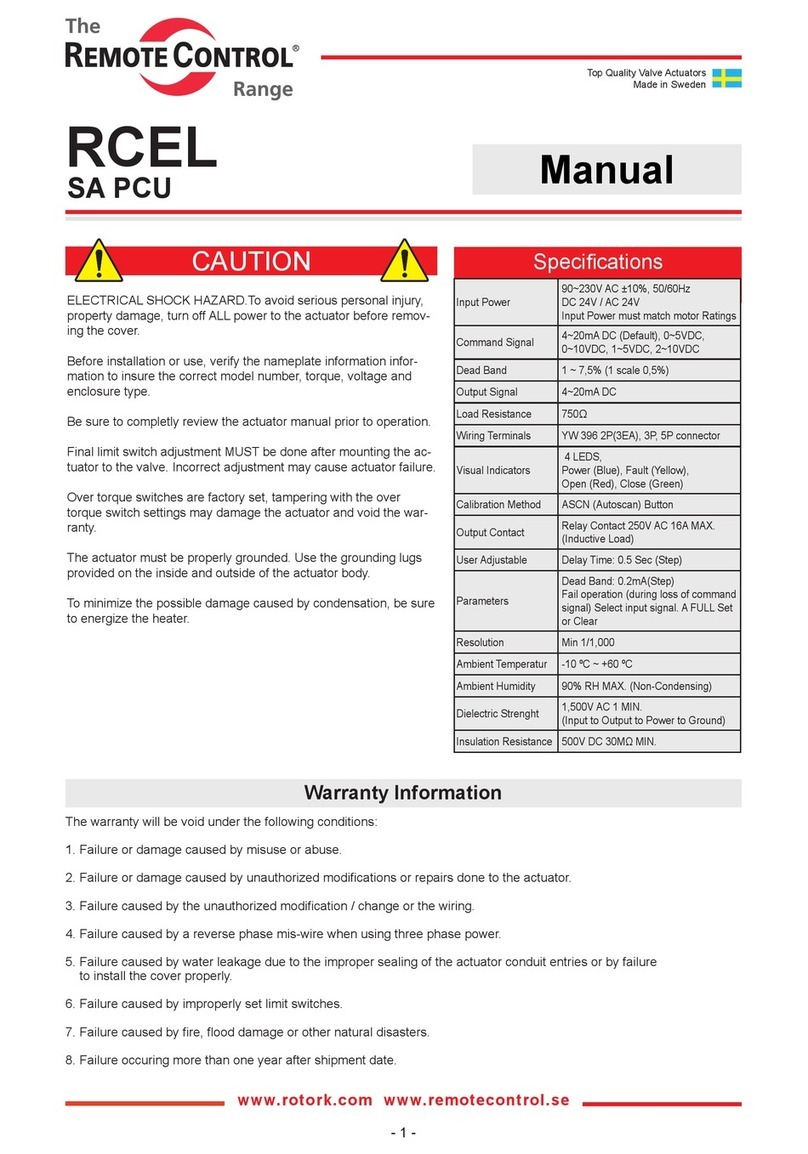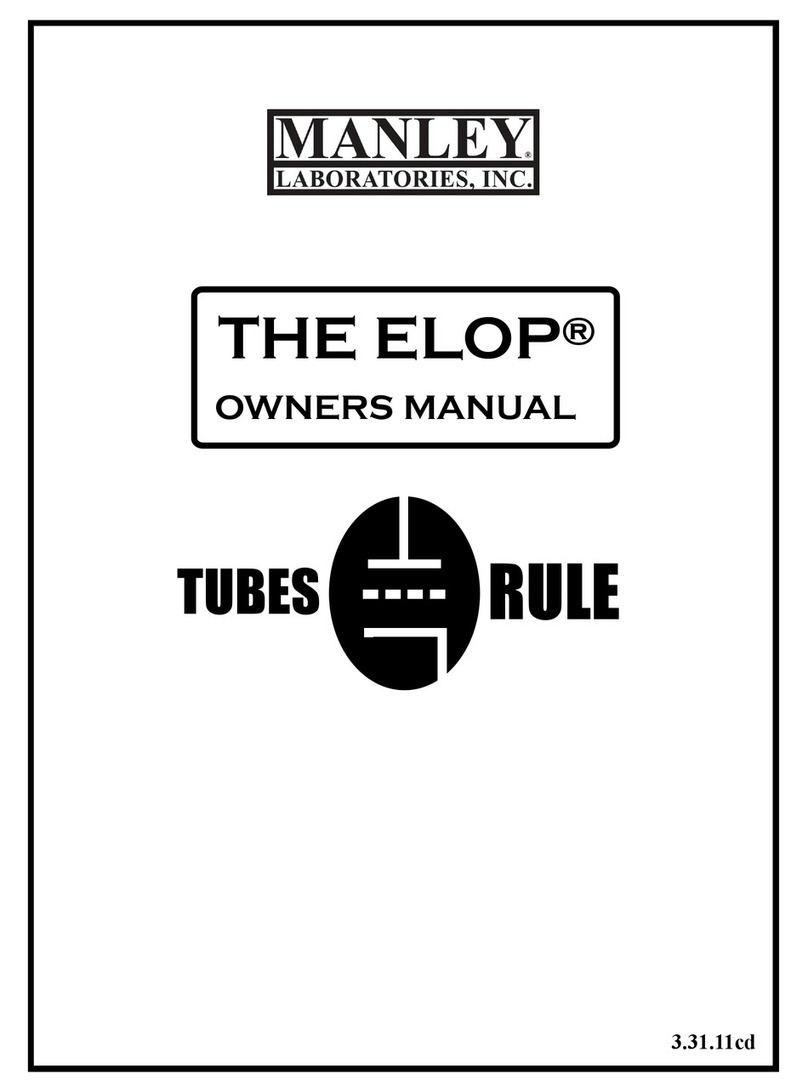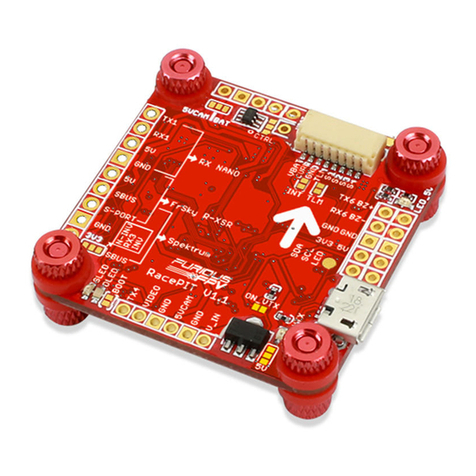MachineryGuide BSC User manual

User Manual
BSC Installation Manual
Read the user manual carefully before using the product
and keep the manual for later reference. EN

Table of Contents
The basic setup of sprayer armature 2
System Build-up 7
Brief overview of the BSC Products 8
BSC System installation 10
Steps of Installment of the BSC (Standard) section controller 11
Steps of Installment of the BSC Plus / Pres Section Controller 13
Steps of Installment of the BSC Flow Section Controller 16
1

The basic setup of sprayer armature
Foundations of Sprayer armature
Possible system elements
1. Section controller
Grouping based on two aspects:
● Type of control:
● Manual
● Electric
● Two wire
● Three wire
● Liquid control type:
● Two way
● Three way (the bypass is lead back into the tank)
Figure 1 Schematic figure of two way system
2

Figure 2 Schematic figure of three way system
Manual (two way)
Manual (three
way)
Electric (two way)
Electric (three way)
Figure 3 Types of section control valves
The diameter of the section output depends on the type and number of nozzles.
3

2. Control valve
(Technical terminology: pressure control valve, regulator valve, volumetric control
valve)
Grouping based on liquid control type:
● Two way (the liquid coming from the pump is drained)
● Three way (the bypass section is lead back into the tank)
Manual (three way)
Electric (three way)
Figure 4 Types of control valves
The most important parameters:
● Speed (the time it takes for it to move from completely open position into
closed position)
● Liquid amount (l/min)
4

3. Master valve
● Can be two or three wire
● Usually ball valve solution
Manual
Electric
Figure 5
Types of master valves
4. Pressure sensor
● Multiple solutions depending on the output number and the output type
● In every case we provide it for our BSC systems
● What we use:
● 16 bar
● 2% accuracy
● 4...20mA
● 8-30V DC
● Thread type: G ¼”
Figure 6
Pressure sensor
5

5. Flow sensor
● Gives impulses, which are counted and the quantity of liquid passing through
can be measured
● The manufacturer labels the products, specifying how many impulses signal 1
liter (this is measurement can be configured in the MachineryGuide software)
● The BSC Flow only supports OC (Open Collector) output format
Figure 7
Flow sensor
6. Relief valve
It is not significant for control, however it is a needed element of the system. In case
there are only two way valves in the system because these lead the liquid back into the
tank, if there is overpressure in the liquid-system (for example if all the two way valves
are closed but the master valve is still open)
Figure 8
Relief valve
6

System Build-up
Figure 9
Possible build-up of the system of a sprayer machine
7

Brief overview of the BSC Products
Figure 10
Different BSC control units
●BSC (standard) module:
● Can control 1-12 sections
● Master valve control
● 2 and 3 way nozzle compatibility
● An ideal solution to upgrade sprayers which have only manual
section control
●BSC Plus module:
● Can control 1-12 sections
● Master valve control
● 2 and 3 way nozzle compatibility
● Pressure measurement and manual control capability
● The system, based on the set pressure, the nozzle type and the
speed, shows the current application rate and the level of the
liquid in the tank
8

●BSC Pres module:
● Can control 1-12 sections
● Master valve control
● 2 and 3 way nozzle compatibility
● Only has pressure sensor (does not have flow sensor)
● Automatic application rate control for every hectare with the use of
the pressure sensor
● Variable rate control capability
●BSC Flow module:
● Can control 1-12 sections
● Master valve control
● 2 and 3 way nozzle compatibility
● Has flow sensor, the pressure sensor is optional
● Automatic application rate control for every hectare, with the use of
flow sensor
● Variable rate control capability
All four module are optionally expandable with a switch, that can sense the machine’s
raised or lowered status, primarily with mounted machinery like a liquid fertilizer
attached to a cultivator. The master valve is automatically turned on by the controller if,
with the help of the switch, it detects that the machinery at hand is lowered for work,
and it also automatically turns off the switch when the machinery is lifted up. The
MachineryGuide software automatically receives this information, thus when the
machine is raised and the tractor does maneuvers the software does not count the area
and the line-guidance is turned off.
Figure 11
Implement switch
9

Furthermore, all four systems can be expanded with hydraulic control as well, in this
way the following functions can be handled on a single display:
● Precision guidance
● Automatic section control
● Application rate control
● Variable rate control
● Pressure and liquid level feedback
● Tank liquid level feedback
● Hydraulic control (boom opening / lifting / tilting etc.)
BSC System installation
Requirements for installation
The BSC units control electronic sections, therefore the sprayer has to have them in
order to be able instal the controller. In the table below we show, for each BSC unit
what kind of electronic implementation is needed.
BSC
(Standard)
BSC Plus
BSC Pres
BSC Flow
Section
control valve
x
x
x
x
Master valve
x (optional)
x (optional)
x (optional)
x (optional)
Regulator
valve
x
x
x
Pressure
sensor
x
x
x (optional)
Flow sensor
x
Relief valve
x (optional)
x (optional)
x (optional)
x (optional)
Explanation:
If there are 3 way valves on the sprayer, then the master valve is not needed in the
system because in the controlling software you can shut-off all the sections at once.
In case of the 2 way valves the master valve is a needed system component.
Relief valve installation is suggested, especially on a sprayer fitted with 2 way valves.
10

Steps of Installment of the BSC (Standard) section
controller
1. Install the BSC control box on the sprayer.
(The box is IP protected and UV resistant, but it is suggested to place it in a place.
where it is not reached by direct sunlight or rain.).
2. Connect the controller section outputs to the valves.
2.a. Place rubber sealing in between the connection and the valve.
2.b. Fasten the connection on the valve with a screw.
11

3. Fasten the cables to the frame of the sprayer..
(The unfastened cables can break or develop contact issues over time, due to the
shaking of the machine during field work).
4. Repeat points 2 and 3 regarding the master valve output (if the given machinery has
this feature).
5. Lead the power supply cable into the tractor’s cabin, the connect it to the battery
6. The hardware installation of the hardware is complete with these steps. For the
software installation please consult the BSC User Manual.
12

Steps of Installment of the BSC Plus / Pres Section
Controller
1. Install the BSC control box on the sprayer.
(The box is IP protected and UV resistant, but it is suggested to place it in a place
where it is not reached by direct sunlight or rain.).
2. Connect the controller section outputs to the valves.
2.a. Place rubber sealing in between the connection and the valve
2.b. Fasten the connection on the valve with a screw.
13

3. Fasten the cables to the frame of the sprayer.
(The unfastened cables can break or develop contact issues over time, due to the
shaking of the machine during field work).
4. Repeat points 2 and 3 regarding the master valve output (if the given machinery has
this feature).
5. Repeat points 2 and 3 regarding the application rate control outputs.
6. Connect the pressure sensor.
In most cases it can be connected on the side of the application rate control as well. In
this case the thinned out plastic needs to be drilled through.
If the only sensor connection is occupied then connect the sensor with the use of a T or
Y dispenser. The thread of the sensor is G ¼.
14

7. Lead the power supply cable into the cabin of the tractor, then connect it to the
battery.
8. The hardware installation of the hardware is complete with these steps. For the
software installation please consult the BSC User Manual.
15

Steps of Installment of the BSC Flow Section
Controller
1. Install the BSC control box on the sprayer.
(The box is IP protected and UV resistant, but it is suggested to place it in a place
where it is not reached by direct sunlight or rain).
2. Connect the controller section outputs to the valves.
2.a. Place rubber sealing in between the connection and the valve.
2.b. Fasten the connection on the valve with a screw.
3. Fasten the cables to the frame of the sprayer.
(The unfastened cables can break or develop contact issues over time, due to the
shaking of the machine during field work)
16

4. Repeat points 2 and 3 regarding the master valve output (if the given machinery has
this feature)
5. Repeat points 2 and 3 regarding the application rate control outputs.
6. Connect the pressure sensor. (OPTIONAL)
In most cases it can be connected on the side of the application rate control as well. In
this case the thinned out plastic needs to be drilled through.
If the only sensor connection is occupied then connect the sensor with the use of a T or
Y dispenser. The thread of the sensor is G ¼.
17

7. Connect the flow meter sensor.
During the configuration stage of the flow meter sensor’s software, you will need to set
the impulse / liter number, which is a value set by the manufacturer. This data needs to
be on the sensor, without this number the sensor cannot be used.
8. Lead the power supply cable into the cabin of the tractor, then connect it to the
battery.
9. The hardware installation of the hardware is complete with these steps. For the
software installation please consult the BSC User Manual.
18
This manual suits for next models
3
Table of contents


